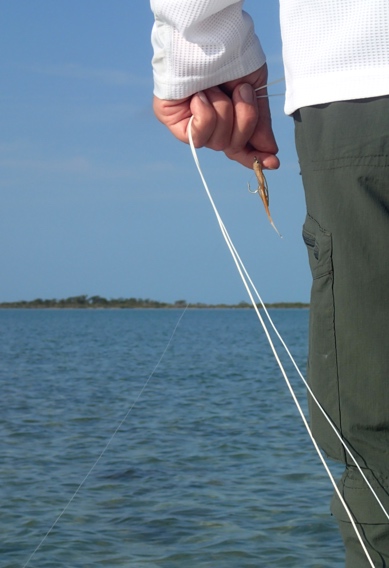
We’ve said it many before, but when it comes to selecting bonefish flies for South Andros, our fish aren’t overly picky. Many, many different fly patterns work well on our flats, so when choosing flies we prefer to focus on a few basic variables for the situation at hand, rather than a particular fly pattern.
Arguably the most important variable of all when selecting a bonefish fly, however, more so than the overall pattern, color, or even size, is the weight of the fly. The weight determines the depth the fly is fished, and in turn, whether or not it is easily seen by the fish! After all, a fish has to be able to see your fly to eat it, right?
All too often anglers blame their fly pattern when a bonefish does not commit, deeming it a ‘refusal,’ when more likely it was the depth at which the fly was tracking when stripped.
But how exactly do you know how heavy of a fly to use? Long time Andros South guest, Wayne Walts, recently shared a simple formula he uses on a regular basis for selecting flies for the depth of the water at hand. We think it’s pretty spot-on, so today we share it with you.
When the water is..
- Calf-deep or less: Choose a fly with small bead chain eyes.
- Knee to calf-deep: Choose a fly with medium-large bead chain eyes.
- Knee-deep or deeper: Choose a fly with brass or lead eyes.
According to Wayne, assuming your average bonefish is cruising somewhere around 3-5 mph, doing so will allow the fly to reach the bottom in roughly three seconds, just enough time for the fish to intercept. Simple as that!
Leave a Reply